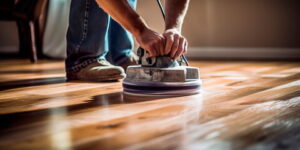For Gas Leak Repair professional plumbing services should be used. Working with gas lines requires special skills and equipment that only professionals have.
If you suspect a gas leak, it’s important to evacuate your home and call for emergency service right away. While waiting for the plumber to arrive, follow these safety tips:
Leaving the discovery and repair of a gas leak to trained professionals is always the best choice. Even a minor leak can quickly become dangerous and potentially deadly. Exposure to carbon monoxide and methane can cause nausea, dizziness, loss of appetite, and other physical symptoms. In addition, the escaping gas can ignite and explode. When you suspect that a gas leak is present, shut off your electricity and immediately call a professional. Do not search for the source of the leak; doing so exposes you to the leaked gases and could trigger a spark that ignites the gas.
A gas leak can be caused by a number of issues, from pipe corrosion to age and wear and tear. While routine maintenance can help prevent these issues, a problem with the natural gas line that connects to your home may still occur.
One of the first signs of a gas leak is a sulphur-like odour, similar to rotten eggs. The odour is created by the chemical that is added to natural gas for safety reasons. If you notice a smell, it is important to check your appliances and the gas line for a leak.
Other signs of a leak include hissing sounds from appliances, bubbles in standing water or dirt, and visible damage to the pipes and hoses that carry gas. The hissing sound is created by the escaping gas, which escapes through a small hole or loose connection. It is important to listen for hissing and other sound around your appliances and the gas line, and pay attention to changes in your property, such as an unexplained increase in your utility bill or dead plants around your home.
Leaks also appear in the area where a pipe connects to another, such as a shut off valve, tee, union, or flexible supply line. While these connections are generally tight, they can loosen and leak if the pipe is exposed to an external force or subject to pressure from surrounding soil. In general, it is more likely for a leak to occur in older gas lines or where the pipes connect to fixtures and appliances.
A gas leak poses a serious safety risk to those in the affected area. Even if the leak is contained to one room, it could ignite and spread quickly throughout the building or residence. A natural gas leak can also release carbon monoxide, a colorless and odorless gas that is poisonous in high concentrations. If you suspect a gas leak, you should evacuate the area until certified professionals declare it safe to return.
One of the most common signs of a gas leak is a noticeable odor in the air. While natural gas companies add a harmless chemical called mercaptan to their pipeline gas, this isn’t always enough to mask the smell of rotten eggs. If you smell this odor, leave the area immediately and call for help.
Another way to detect a gas leak is to listen for hissing noises. The more the sound is pronounced, the closer you may be to the source. This can be heard near appliances, pipes, and the gas meter. If you hear a hissing sound that is new, don’t ignore it.
It is important to avoid using any sources of ignition, such as light switches or electrical equipment, in the area of a suspected leak. A spark could ignite the leaking gas and cause an explosion or fire. If you must use these items, keep them as far away from the suspected leak as possible and make sure to turn them off completely.
You should also turn off any heating, cooling, cooking, and lighting systems that are in the area of a suspected gas leak. You should also keep flammable objects, such as newspapers or laundry, away from the area. It is also a good idea to keep pets and children away from the area of a suspected gas leak. They might be excited or curious, which can trigger a dangerous reaction.
After a certified inspector has located and fixed the leak, they will test for safety before allowing you to re-enter your home or business. They will also tell you if you need to shut off any valves at the meter or near your appliances.
The gas line that runs to your home is important for providing a reliable energy source for heating, cooking, and other household appliances. Unfortunately, these lines can become damaged or leak. It is important to get these problems fixed as soon as possible to avoid potentially dangerous situations like fires, explosions, and poisoning for people or animals living in your home.
There are a number of things that can cause damage to a gas line, including age and environmental factors. Over time, metal lines can start to corrode and develop hairline cracks that will eventually weaken the entire pipe. Additionally, earthquake damage can cause gas pipes to bend or break. In some cases, these lines may need to be replaced entirely if they have become so damaged.
It is recommended that homeowners contact a professional to perform any gas line repair, as it can be extremely dangerous for anyone who does not have the proper training and experience. However, if you choose to work on your own gas line repair or installation, it is important to take the following safety precautions:
Before beginning any work on your gas line, make sure that it is completely turned off. This step is especially important if the line is buried in your yard or underground, as it will prevent you from accidentally exposing yourself to gas and other dangerous chemicals. Next, you should put on a gas mask and gloves before removing the insulated covering from the line to begin working on it.
Once you have removed the protective covering from the gas line, you should clean and sand the surface before sealing it with epoxy. Once the line has been properly repaired, you should reinstall the covers and test it for leaks. If there are still leaks, you can apply more epoxy until you have a completely sealed line.
It is also a good idea to have your gas lines professionally inspected on a regular basis, as this will help to keep them in good condition. It is especially important to inspect them regularly during the summer and winter, when changes in temperature can cause the lines to expand or contract.
Many homeowners install gas appliances and lines in their home, including fireplaces, water heaters, stoves, furnaces, and outdoor fire pits. It is important that you keep an eye on these lines and connections for signs of a leak, as carbon monoxide can be deadly in large amounts.
Whether you notice the rotten egg smell, hear strange sounds, or have an unexplained increase in your gas bill, these are all signs of a potential problem with your gas line. You should also pay attention to changes in the vegetation around your home, as escaping gas will cause plants to die in the area.
Once you have noticed a possible leak, it is best to contact your local plumber right away. They can perform the bubble test to check for a gas leak. This involves rubbing soapy water on the line and looking for bubbles. You should be able to tell where the leak is by the location of the bubbles.
A plumber can use a number of methods to fix a gas line. One way is to replace the regulator valve. This is a simple job, and it will often solve the issue. Another method is to repair the joints on the pipe with epoxy. This will help to seal the leak and save you money in the long run.
It is important to note that you should never try to work on a gas leak yourself. Working on a leaking gas line can be dangerous, and it can even lead to an explosion. You should always hire a professional for gas line repair in order to protect yourself and your home from this danger.
It is also a good idea to have carbon monoxide detectors installed in your home, as this is an odourless and colourless gas that can be fatal in large quantities. Regularly testing these devices will ensure that they are working properly and are providing you with the level of protection that you need. You should also make sure that you have a professional inspect your home’s gas line on a regular basis to catch any problems before they become serious.




